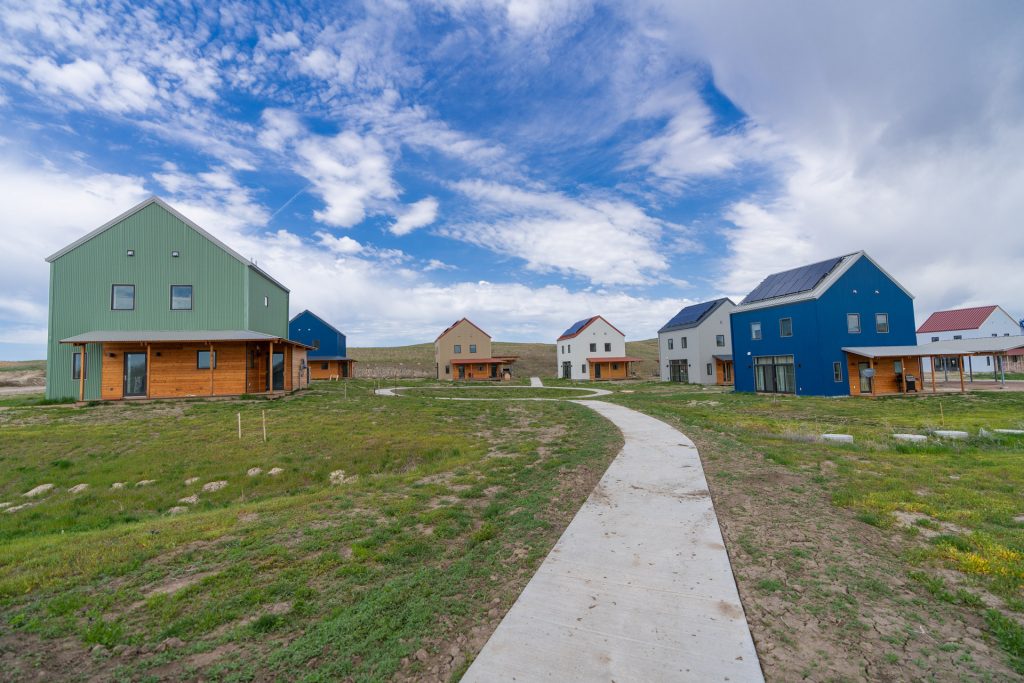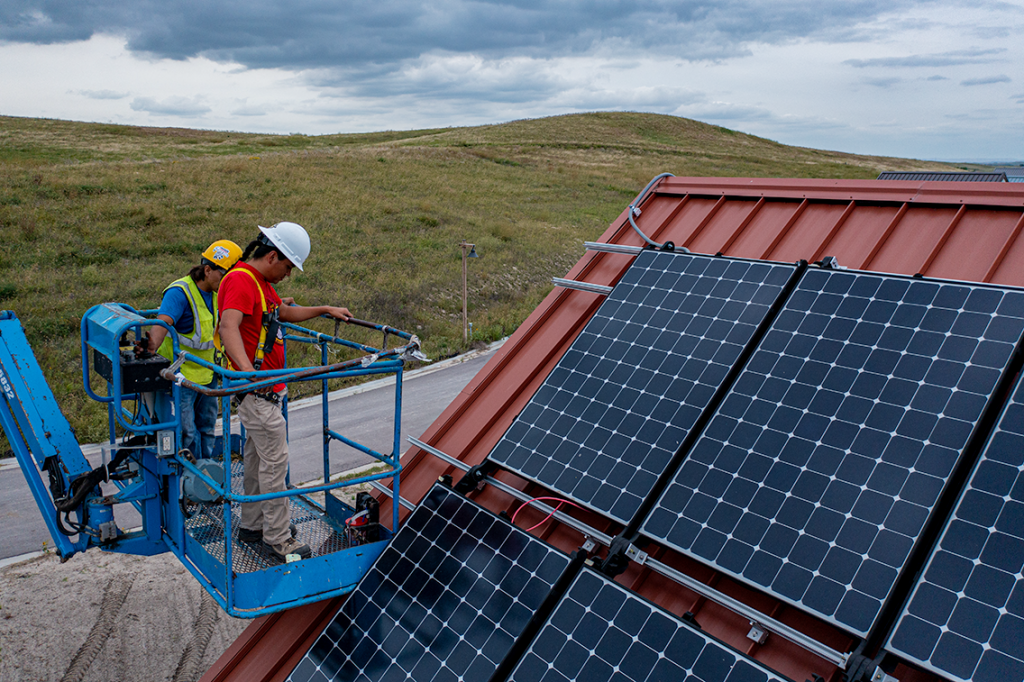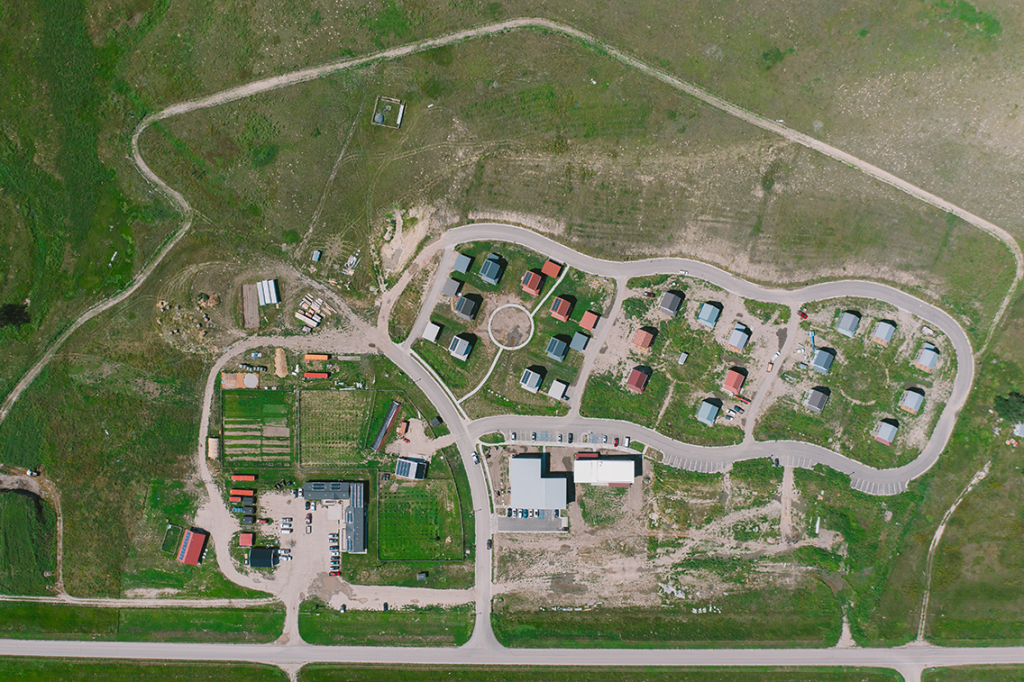With the launch of a new initiative, ISC will continue to address the energy inefficiencies and inequities that disproportionately harm communities of color.
“Energy inequity is an issue of rising urgency. “So declares the abstract of a January 2022 study published in Nature Communications, citing that about 16% of U.S. households experience energy poverty. Even more alarming, the same study notes that households in communities of color experience energy poverty at a rate 60% greater than those in white communities. Energy poverty is disproportionately impacting Black, Hispanic and Native American communities, and one of the paths to combating energy inequity is with energy ownership.
The Institute for Sustainable Communities (ISC) is keenly aware of disparities resulting from the United States’ history of racial discrimination and colonization. ISC, alongside the Tides Foundation and Wells Fargo, are coming together to launch a climate justice fund to invest in the creation of more equitable access to clean and affordable energy while also improving climate resiliency in divested communities.
ISC has launched a new initiative, “Dismantling Energy Inequity in Communities of Color” (DEICC), which will expand our focus in addressing this urgent issue. ISC has identified 10 community-based organizations led by people of color that we will support in developing weather-resilient, solar-powered community centers – “resilience hubs.” These geographically distributed hubs will be just one step, but an important one, in addressing energy inequities in communities of color – by creating a gathering space for community members in times of joy and climate crisis alike.
“The most transformative and sustainable solutions to address climate inequities are developed and led by local leaders who know their community best,” said Sonia Joshi, Director of U.S. Programs at ISC. “What is often missing is the technical capacity/support and financial resources to move from ideas to action.”
The partner organizations within the DEICC project are:
- Coalition for Environment, Equity and Resilience (Houston, TX)
- Community Members for Environmental Justice (Minneapolis, MN)
- East Oakland Collective (Oakland, CA)
- Garfield Park Community Council (Chicago, IL)
- Neighborhood Housing Services Southeast Florida (Miami, FL)
- Nos Quedamos (Bronx, NY)
- Pacoima Beautiful (Los Angeles, CA)
- Partnership for Southern Equity (Atlanta, GA)
- Thunder Valley Community Development Corporation (Porcupine, SD)
- Unlimited Potential (Phoenix, AZ)
Addressing Energy Inefficiencies and Inequities with Energy Ownership
ISC supports communities working to make environmental changes based on their lived experiences. Several of our community-based partners have already been working to address energy inefficiencies and inequities with energy ownership through varying solar projects.
Thunder Valley Community Development Corporation in Porcupine, SD, and We Stay/Nos Quedamos in the Bronx, NY, are two organizations building on current renewable energy projects to establish energy ownership/sovereignty.
In the Bronx’s Melrose neighborhood, Nos Quedamos (NQ) has been working on community ownership, equity and justice for decades. Nos Quedamos has been a long-standing ISC partner, working first within the Partnership for Resilient Communities program, where the organization focused on establishing three resiliency hub pavilions. Now as a part of DEICC, NQ will be positioned to advance progress on those hubs with renewed and targeted support.
According to President and Chief Executive Officer Jessica Clemente, Nos Quedamos is establishing energy development models that drive community co-owned renewable energy infrastructure projects and community-led energy planning.
“Our work aims to help address the energy burden needs of Melrose residents and seeks to dismantle existing hurdles in renewable energy generation that can be overcome by developing strong, equitable partnerships between grassroots organizations, public agencies, and other organizations,” Clemente said. “By accomplishing this, Nos Quedamos seeks to demonstrate the community and resiliency benefits of locally-led community energy ownership.”
Community energy ownership can take many forms. In the case of community solar energy, it can provide homeowners and renters equal access to all the economic and environmental benefits of solar energy generation. For other communities, it looks more like complete energy sovereignty. One of Thunder Valley Community Development Corporation’s key initiatives is Regenerative Community Development, which prioritizes the implementation of renewable energy. This builds into the organization’s mission, which takes a holistic approach as it works for the liberation of the Lakota people.
“We have houses that we’ve built and apartments that we built that have solar panels,” David Clifford, director of communications at Thunder Valley, told ISC. “The houses and the apartments are built to attract the sunlight and heat [to heat or cool] the homes based off the position that the sun hits them in the summer.”
“The tenants don’t have huge bills,” he added. “It’s revolutionary for our tribe to not only have our own real estate but to have earth-conscious features like solar panels.”
Over the last few years, Thunder Valley has conducted sustainable energy feasibility studies with its community and has discovered that the community is most interested in producing, owning, operating and using all of its own energy.
“We’re in an extremely rural area. The cost of getting energy to community members is much higher because of the distances, the initial connection charge, etc.,” Kimberly Pelkofsky, director of design and planning at Thunder Valley, noted. “Right now, our systems are grid-tied, so when the power goes out, we don’t have power even though we have solar.”
The DEICC program presents an opportunity for Thunder Valley to invest in the battery storage systems needed to ensure that the solar energy systems function even during a power outage. More importantly, it is one step closer to that goal of energy sovereignty.
“We are hoping to focus on our community center to provide a community asset first, and then roll out a broader project…to have our own microgrid to have a solar field,” Pelkofsky added.



Photo Credit: Thunder Valley Community Development Corporation
Building Community Connections
One of ISC’s core strategies is to connect leaders of color so that ideas and strategies can be shared and projects can be scaled for broader adaptation. The DEICC initiative is no exception to this approach. Building community connections is integral to DEICC’s overall vision, and the 10 participating community organizations are aligned with this goal.
“How does this community connect to the community that’s 30 miles away? How do you get people around in a way that is life-sustaining as well as good for the environment?” Pelkofsky said, noting that Thunder Valley could serve as a model. “Sometimes people can get into this competition, like our location over your location, and we want to keep as open as possible and support and lift up all the work that is happening as much as we can.”
“I’m sure other people are facing similar things that we’re facing in trying to implement renewable energy,” Clifford added. “It would be cool to learn and to bring something back to teach to our folks as well.”
As for Nos Quedamos, who has journeyed with ISC through many phases and changes, learning exchanges are an expectation and an essential part of truly transformative work.
“It is important to continue to make connections to learn and grow,” Clemente said. “The support we receive from ISC, PRC and DEICC is an investment and a commitment to deep community change. Our transformative work is not planned, implemented and fully operable all in one funding cycle. It takes capacity building, operational/project funding and a trusted network that facilitates the growth and long-term sustainable success of the work.
